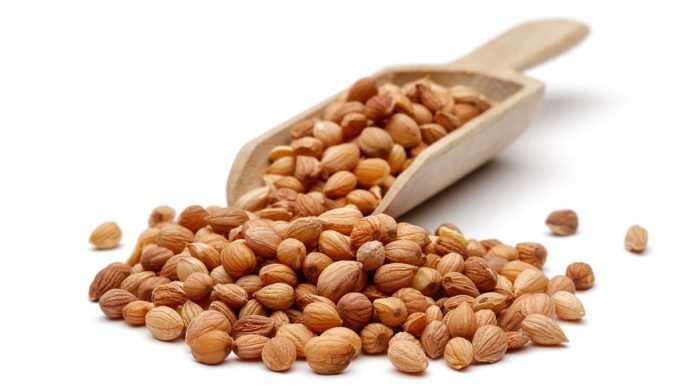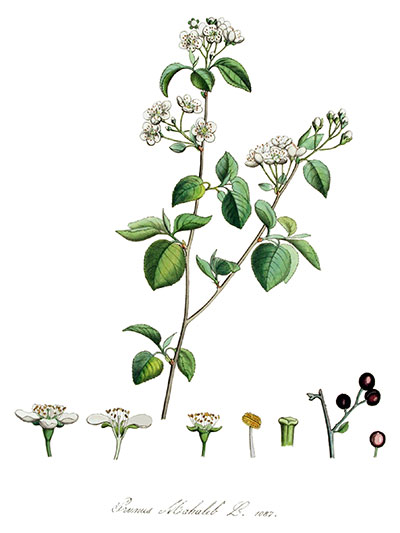The spice is spelled in many different ways in various parts of the Mediterranean and Middle East – mahlab, mahlep, mahlebi, mahlepi, mahalab, or mahalabi. But they all refer to Mahleb, an aromatic spice made from the seeds of a species of cherry called Prunus mahaleb, also known as Mahaleb or St. Lucie cherry. These black cherries grow wild in the Mediterranean region, especially in Turkey, and the Middle East, with Iran being the world’s major producer of mahleb.
To extract the spice, the cherry stones are cracked open and the seed kernel, soft to the touch, is ground to a pale yellow powder, which looks very similar mace. Mahleb is usually stored as the seed kernel itself, and at the time of use, small quantities are ground, using a manual coffee grinder or mortar and pestle, as powdered mahleb tends to go stale quickly once ground.
While the aroma of mahleb is a sweet-scented mix of cherry and almond, often described as marzipan-like, the flavour profile is compared with the fragrant qualities of rosewater, while lending a hint of sweetness, nuttiness and a very subtle, yet pleasant, bitter aftertaste. It is definitely not a spicy spice, just a wonderful flavour additive which works great in baked goods.
In Turkey, mahleb is used in the making of pogaca scones and pastries, while in the Middle East, it is popularly known to flavour ma’amoul. In Greek Cuisine, mahleb is the star ingredient in tsoureki breads, Christmas bread, Easter bread and New Year’s vasilopita cake. In Egypt, a paste of powdered mahleb, honey and sesame is used as a bread spread.
With mahleb, less is more. A few small pinches of powdered mahleb can amp up a simple milk pudding, while rich buttery pastries are made better with a spoonful or two. Use too much and the bitterness overpowers the dish, but when used sparingly, the notes of cherry and almond sing, transforming the dish completely.


